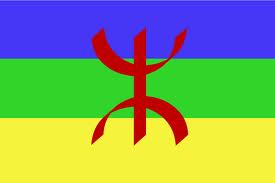By Souhail Karam
 RABAT Oct 17 (Reuters) – An 8,000-year-old rock engraving depicting the Sun as a divinity has been destroyed in the south of Morocco, local residents said, blaming Salafists seeking to impose their fundamentalist view of Islam.
RABAT Oct 17 (Reuters) – An 8,000-year-old rock engraving depicting the Sun as a divinity has been destroyed in the south of Morocco, local residents said, blaming Salafists seeking to impose their fundamentalist view of Islam.
Ahmed Assid, a prominent activist for the indigenous Amazigh people and member of the Royal Institute for Amazigh Culture (IRCAM), said the pagan rock engraving, known as a petroglyph — was destroyed this week in the Toubkal National Park.
“The information we have received from Amazigh activists in the area suggests Salafists were behind the act,” Assid told Reuters, noting however that he had yet to see pictures of the destroyed petroglyph.
“This act follows a noticeable rise in Salafist activities in predominantly-Amazigh regions of Morocco to enforce a puritanical interpretation of Islam,” he added.
He said, for example, Salafists were encouraging parents not to play traditional Amazigh music at their children’s weddings, giving them cash handouts to opt instead for Islamic religious chants.
“Their view is that aspects of Amazigh culture, including pre-Islamic heritage, still present today defeat the purpose of the Islamic conquests,” he added.
Morocco has generally followed a tolerant form of Sunni Islam, but Salafists rose to prominence after the Sept 11, 2001 attacks on the United States, with hundreds jailed for 2003 bombings in the town of Casablanca.
After the popular uprisings which swept the Arab world last year – which Morocco mostly escaped – they have been expanding their influence across North Africa.
Meryem Demnati, of the Amazigh Freeedoms and Rights Watchdog, also confirmed the destruction of the petroglyph and added that residents in the area blamed Salafists.
Officials at the Moroccan culture ministry could not be reached for comment.
Amazigh, or Imazighen, lived in north Africa long before Muslims set foot in the land in the 7th century. While there are no official figures on their numbers, Morocco is widely believed to have the biggest Amazigh community in the world.
Assid said Moroccan authorities were partly to blame for failing to protect ancient artefacts and other Amazigh archaeological sites.
“Some 37,000 Amazigh petroglyphs like the one that was destroyed this week have been smuggled out of Morocco in the past 20 years,” said Assid.
In July, al Qaeda-linked Islamist fighters used pick-axes, shovels and hammers to shatter earthen tombs and shrines of local saints in Mali’s fabled desert city of Timbuktu on the grounds they were defending the purity of their faith against idol worship.
(Reporting By Souhail Karam; Editing by Myra MacDonald)
.







